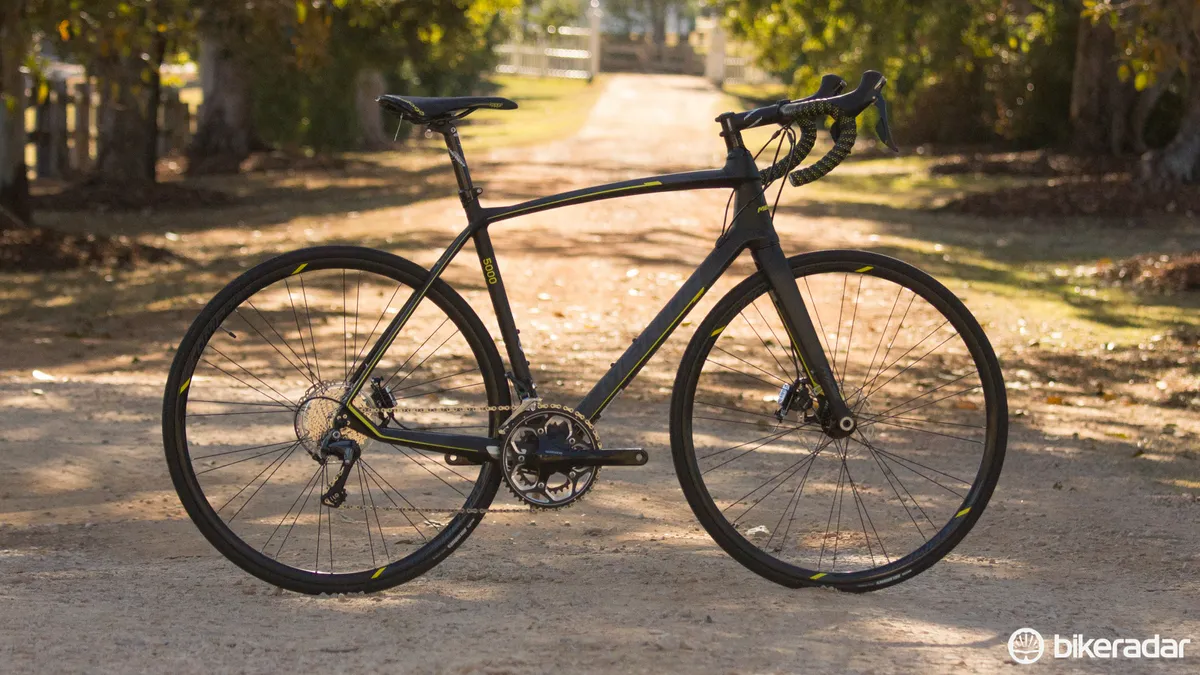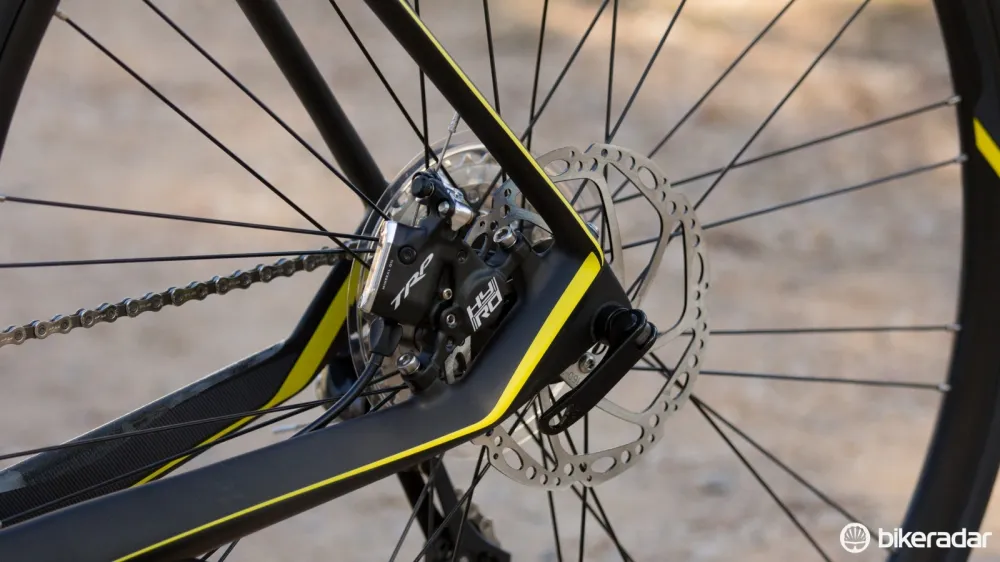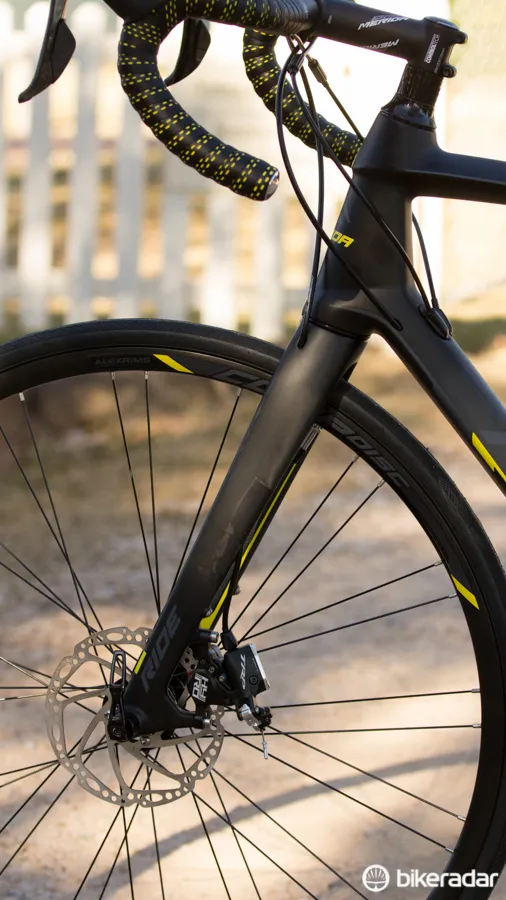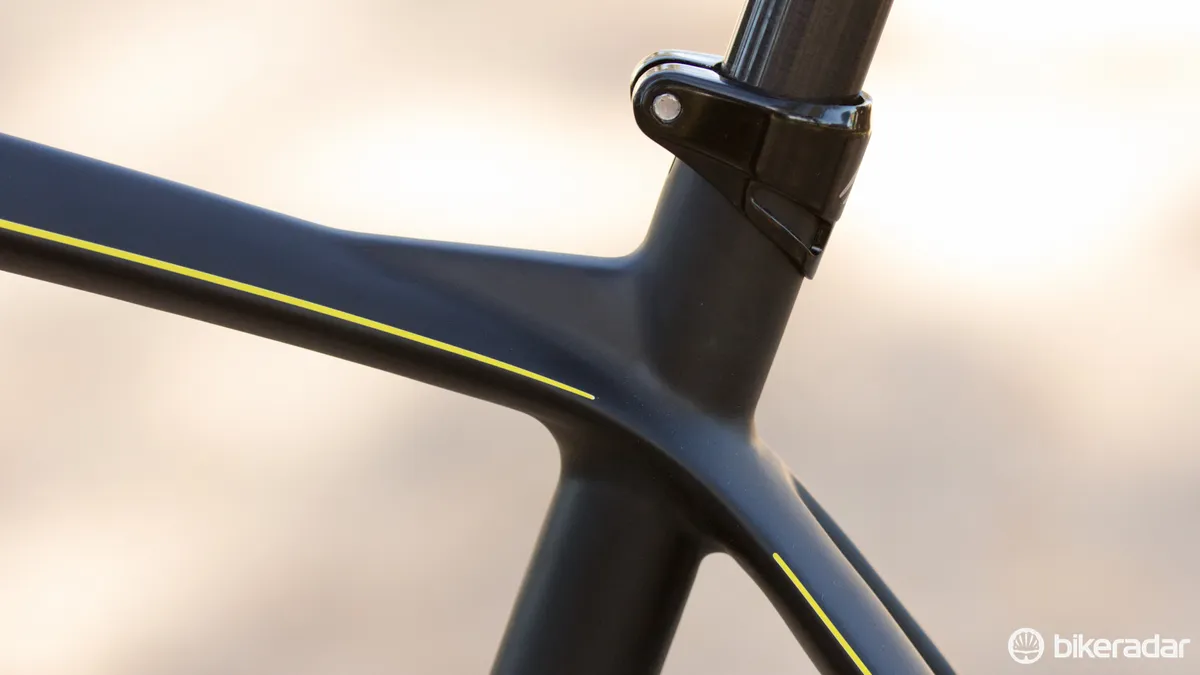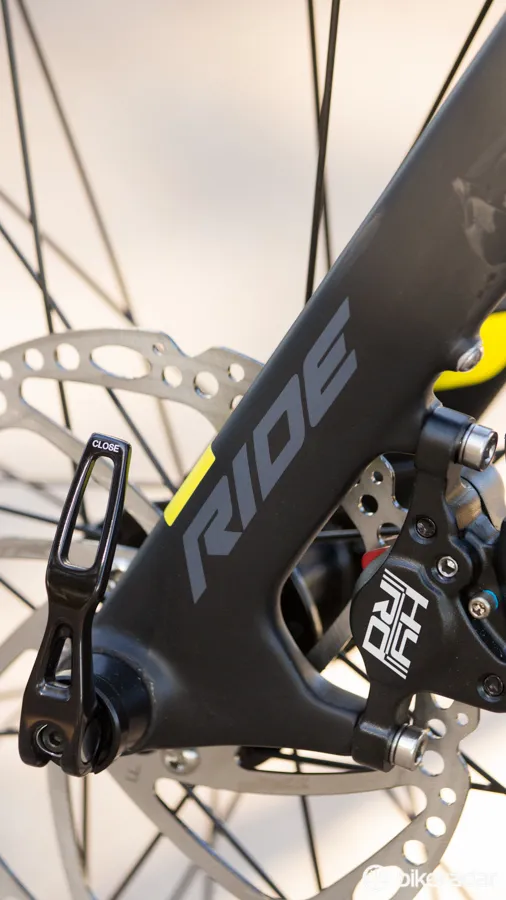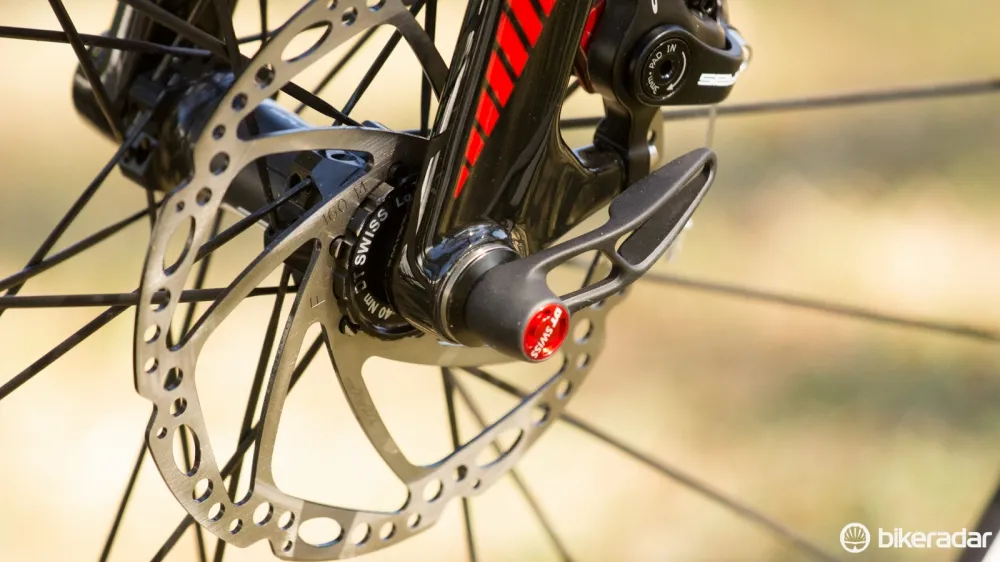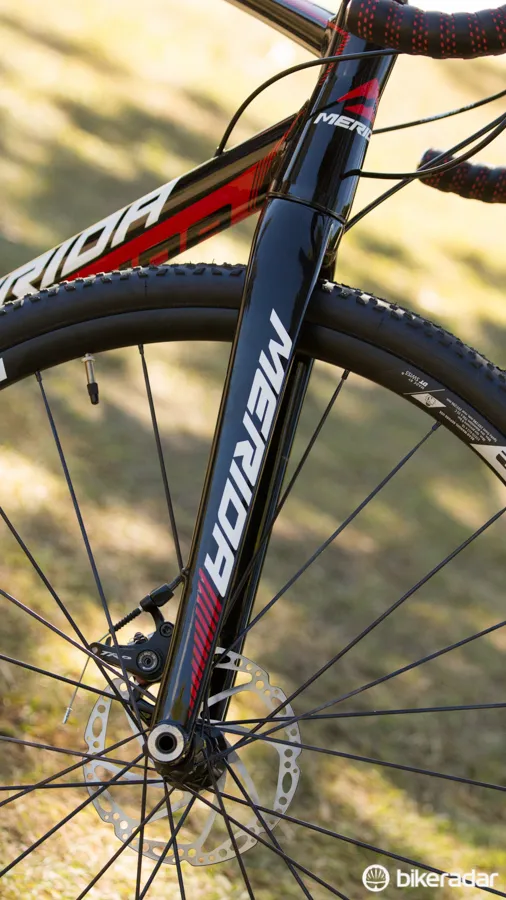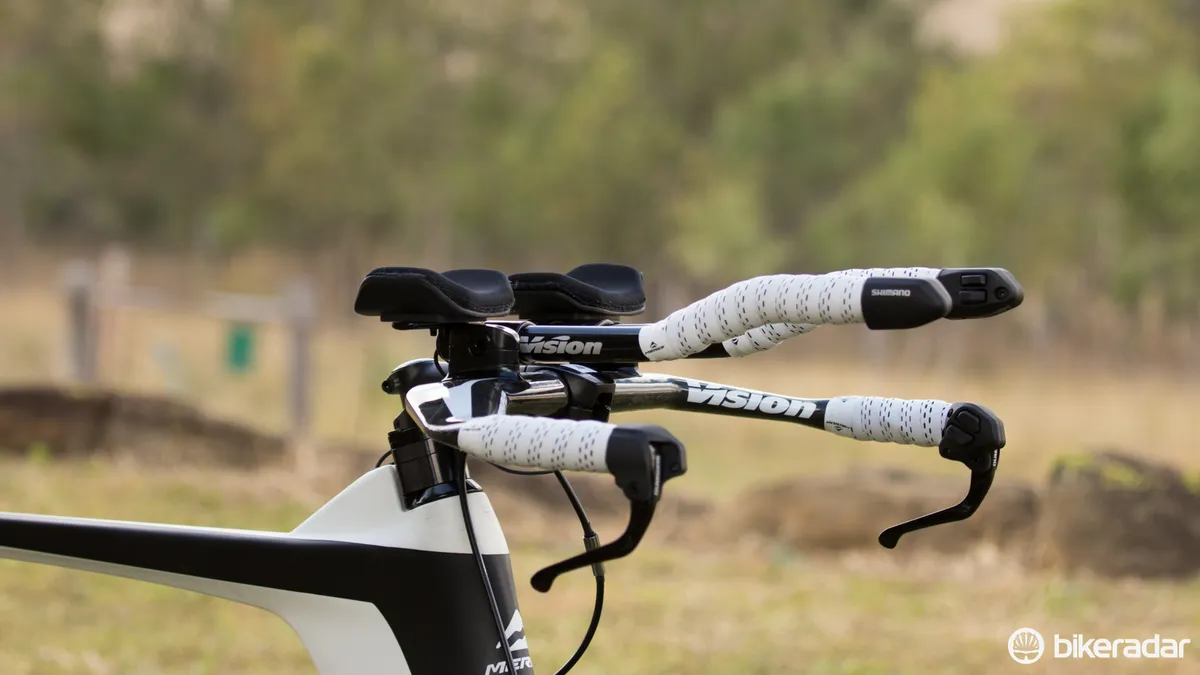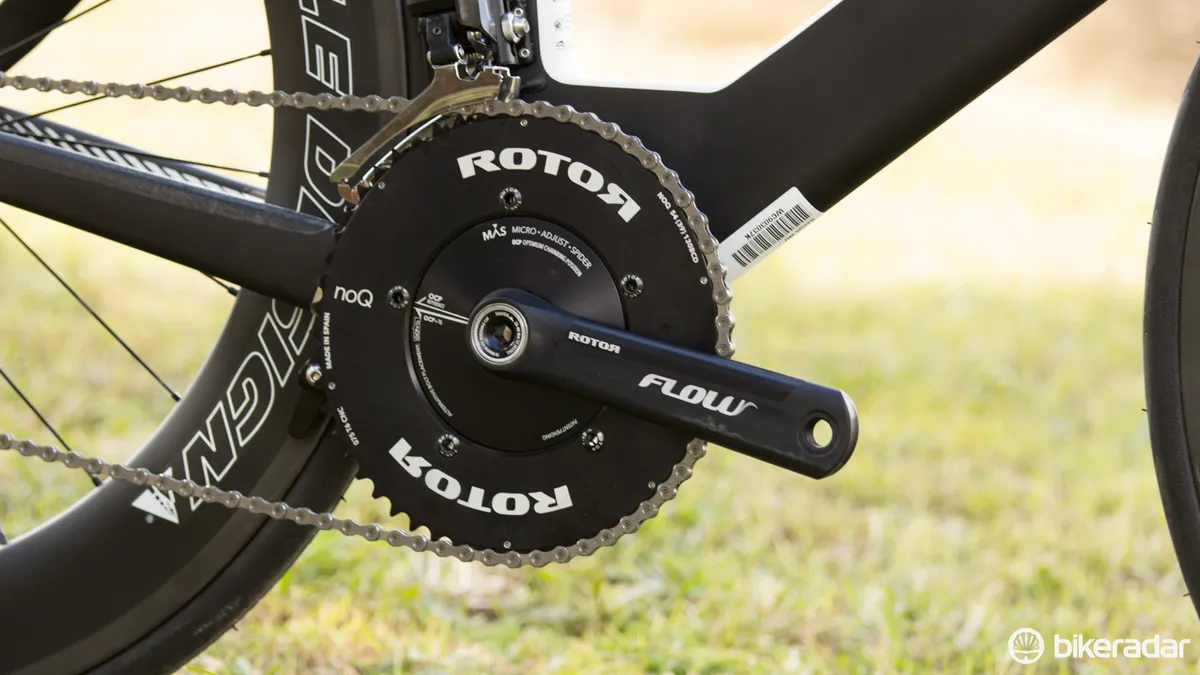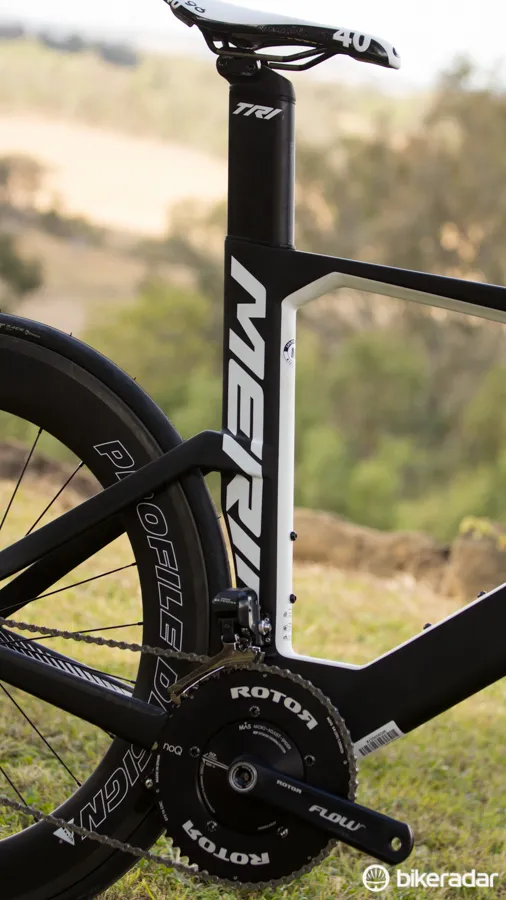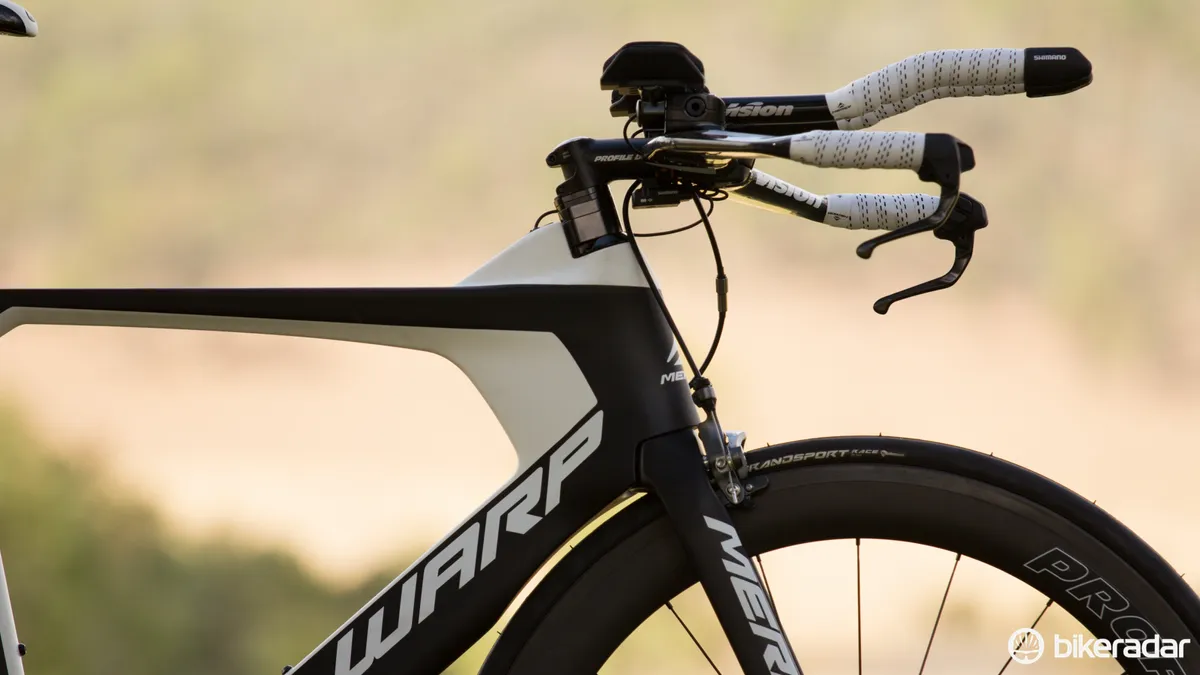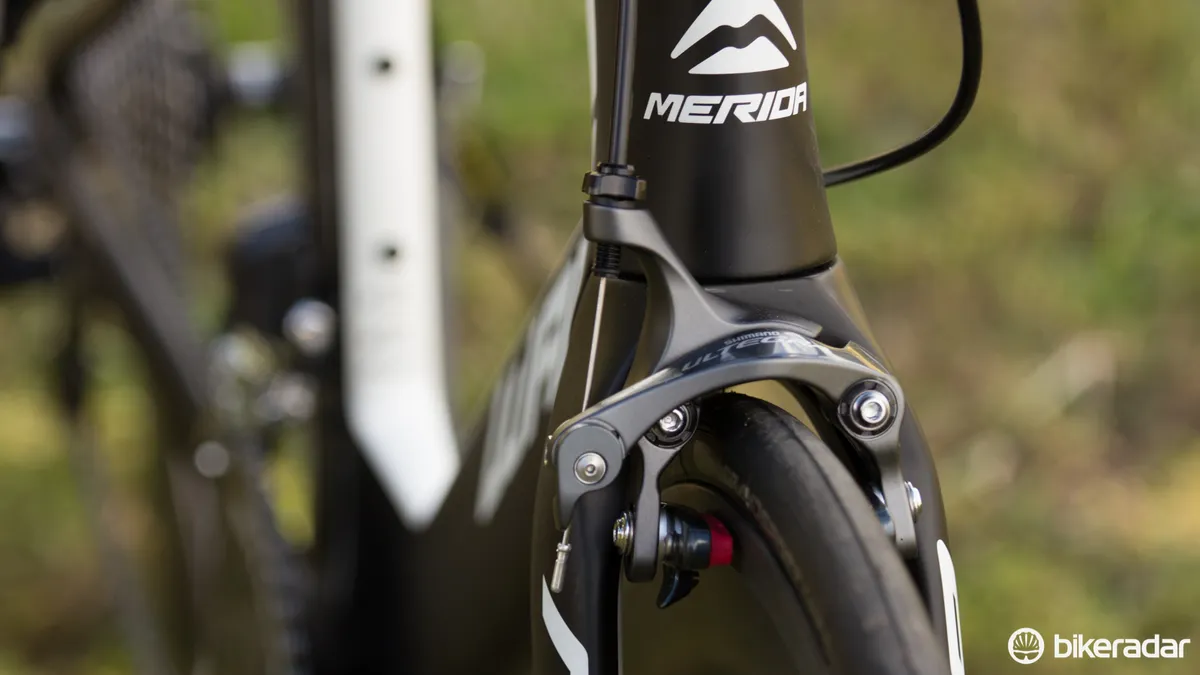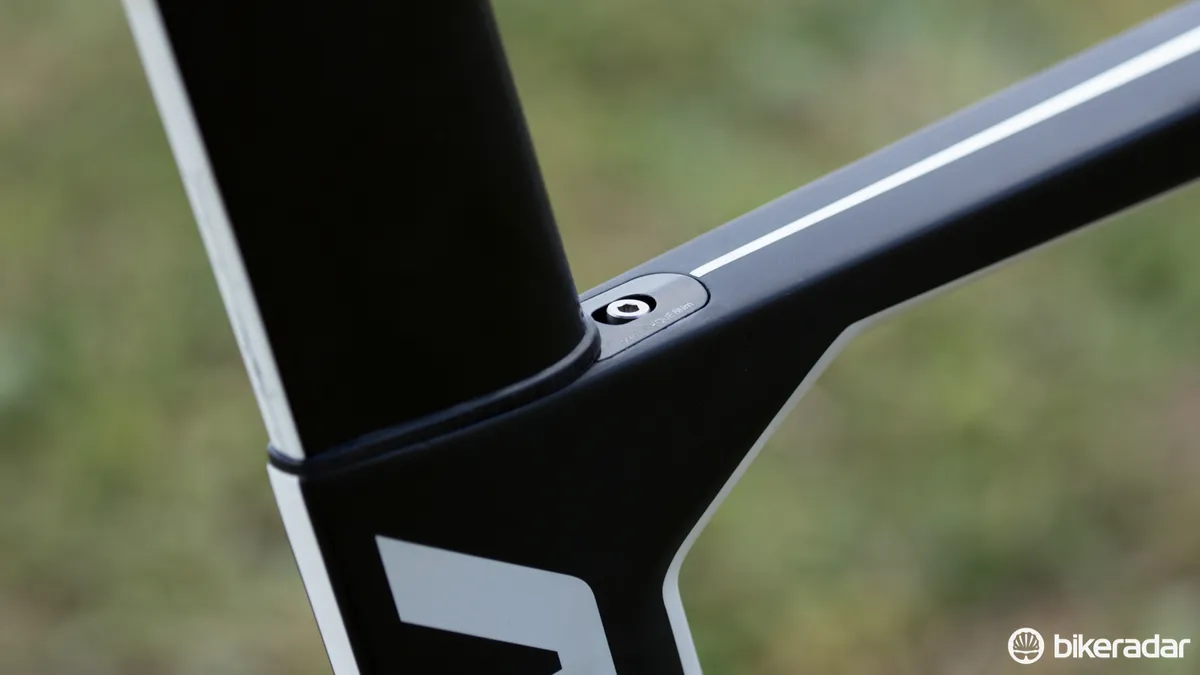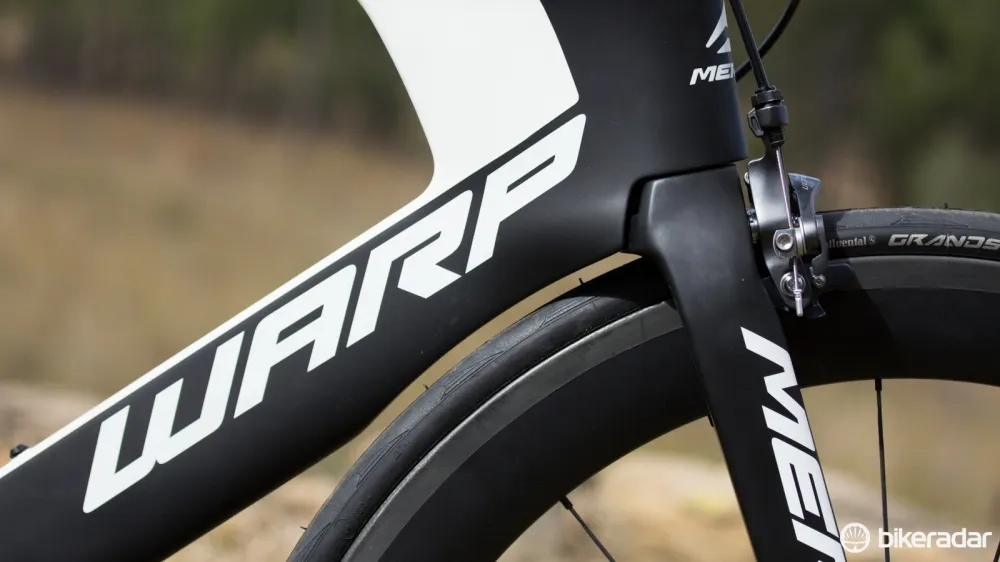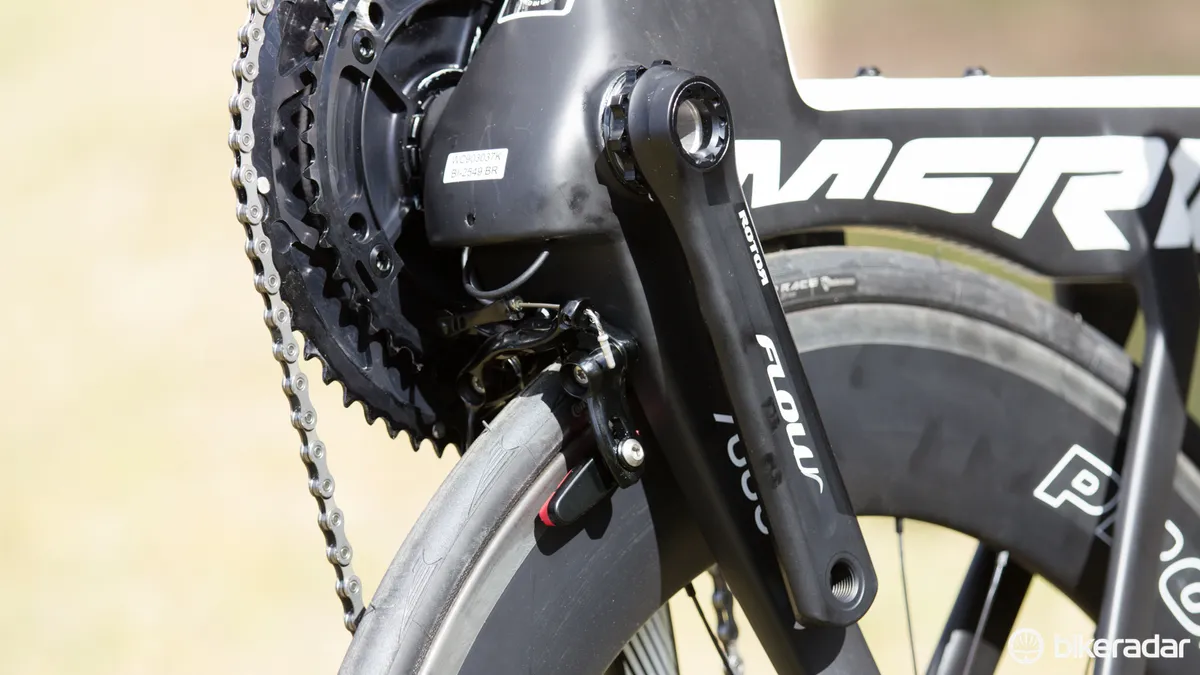BikeRadar recently visited Hidden Vale in rural Queensland for a dealer launch hosted by Advance Traders, Australia’s distributors for Merida, Lapierre, Norco, Met and a handful of other brands. With the venue being surrounded by trails, the launch of the 2015 mountain bike range gained the most attention, but we got a brief look at what’s new in Taiwanese big-hitter Merida’s road range, prior to the upcoming media-flurry that is the Eurobike trade show.
The Warp TT and Scultura both continue with solely componentry and aesthetic changes for 2015, but the big news is with a new endurance-based Ride Disc carbon, a triathlon specific Warp and a new price-conscious range of cyclocross bikes. Detailed specifics of each of the models, including geometry, are still a little vague, but below is a brief glimpse and what we know so far.
As well as the new bikes, Merida has fully reworked its previously confusing model naming across its range. The numbers following the model names prefix refer to the level of the bike: four digits is for anything carbon, 9000 being the highest, 1000 the lowest. Three digits is for alloy bikes, with 900 the highest, 100 the lowest. And double digits are left for steel bikes.
Ride Disc
Originally designed as an endurance bike for the masses that its sponsored WorldTour team could also use for the cobble races, the Ride offers a relaxed and stable position in the saddle, along with greater frame and fork compliance for comfort. For 2015, the Ride is joined by a carbon disc-brake version – the Ride Disc.
The new full carbon CF-2 (Comp level) frame features a large offset from the seatstays to seat tube along with ‘FlexStays’ to allow for far greater compliance in the rear end. The seatstays are a super thin 10mm diameter, something Merida states is a UCI minimum. A slim 27.2mm seat post is there to further aid compliance.
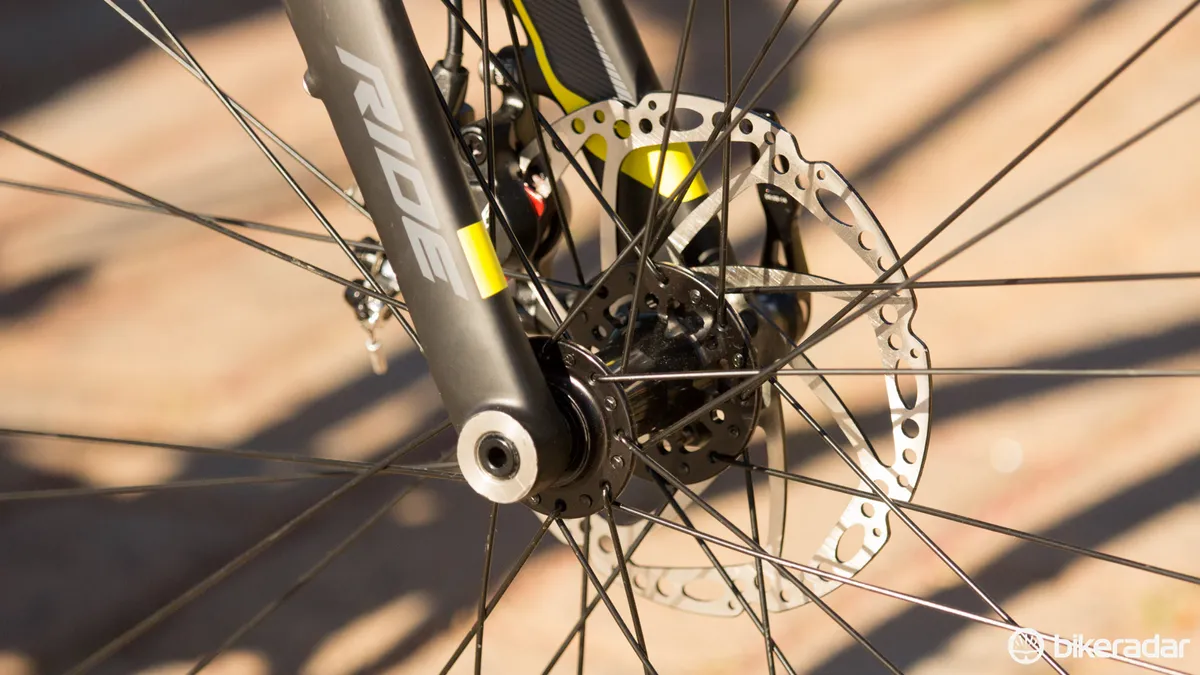
A 15mm thru-axle sits upfront of the Ride Disc
Encouraging compliance at the front is the Merida F-Flex fork blades, which have been designed with less material at the dropout for greater flex. Adding back the confidence in this disc-brake full carbon fork is a 15mm thru-axle and tapered steerer tube.
Post mount brake mounts feature for both the fork and rear chainstay, with the rear one placed at an angle that allows for easy tool access. While the front wheel gets a thru-axle, the rear sticks with a standard 5mm quick release.
Like most carbon frames that offer internal cable routing, the Ride Disc frame is Di2 and mechanical compatible. The fork also receives internal cable routing, with the front brake hose/cable entering near the crown.
Without rim brake calipers, tyre clearance has been increased to allow for 28mm rubber plus fenders (mudguards) – Merida will offer special aftermarket models that provide a more seamless look with the bike.
One example of the new Ride Disc range that should prove quite popular is the Ride Disc 9000 (AU$3,799 / UK£TBC) which features a 11-speed Shimano Ultegra drivetrain, RS685 hydraulic brakes and DT Swiss R24 Spline centerlock wheels.
Warp Tri
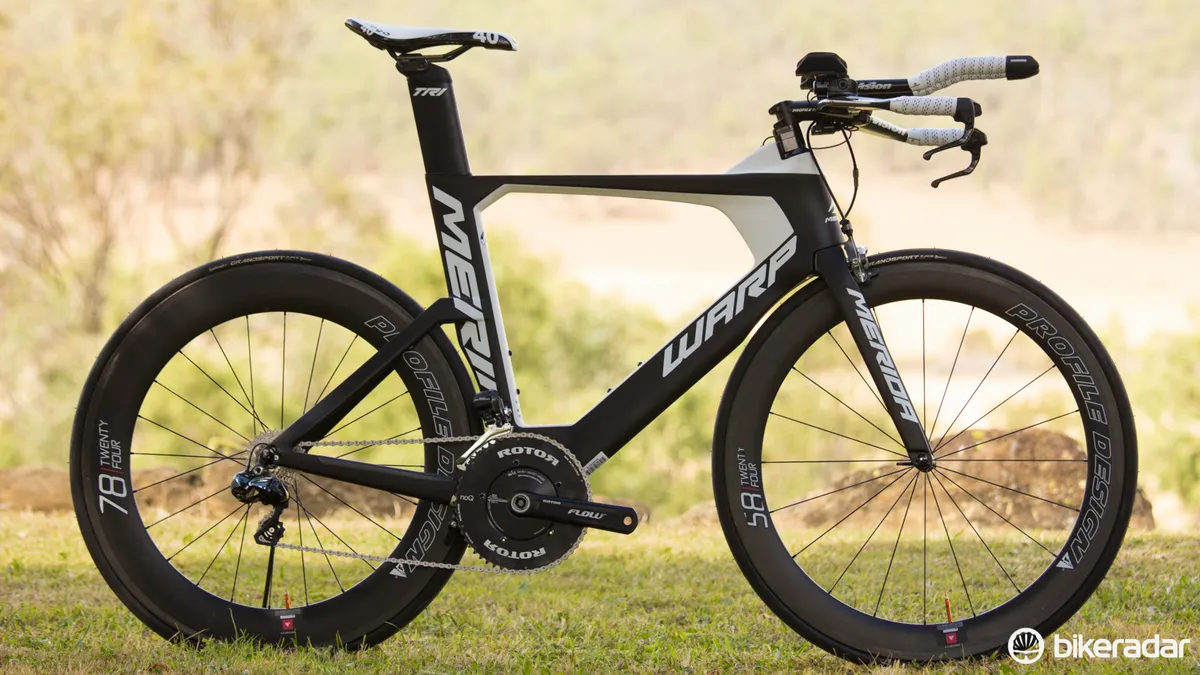
2015 Merida Warp Tri 7000-E
Compared with the UCI-approved Warp TT bike, the Warp Tri is purpose built for those who cycle between a swim and a run. Merida’s NACA Fastback aero tube profiles continue from the Warp TT onto this Tri version. The Warp Tri models we saw were all using a lower grade of carbon – what Merida calls 'CF2' – than the WorldTour-level Warp TT Team.
The biggest difference from the TT is in the geometry, with a steeper seat tube facilitating a far more forward position, and a taller head tube for the longer races. The seatpost head can also be flipped, opening up more fore-aft position adjustability.

A look at the highly adjustable head tube design
Other features include Merida’s ‘Spacer Solution’, which combines aero shaped fork steerer spacers with a dropped head tube to allow for a great range of front end adjustment, without a significant drag increase from the bike.
In a fetching white and black paint scheme, the Warp Tri 7000-E (AU$6,999 / UK£TBC) caught our attention. Its Shimano Ultegra Di2 groupset, direct-mount brakes, 54/42t Rotor Flow crankset and Profile carbon F58/R78 wheelset appears to be a well thought out package – and one that weighs in at 8.97kg. At the entry level, and sharing the same frame, there's the Warp Tri 3000 (AU$2,999 / UK£TBC) with Shimano Ultegra/105 gearing.
Cyclocross
While there were hints at a carbon cyclocross bike for 2016, 2015 brings in an all-new disc-brake equipped platform. Featuring a heavily hydroformed alloy frame with full carbon 15mm thru-axle fork, the new Lite series is a price conscious race option. A 27.2mm seatpost should help take a little sting away when seated.
The frames’ angled internal cable routing offers a wide, friction free exit port at the bottom bracket, which should help reduce cable friction from dirt contamination.

The rear brake is tucked away
Positioned on the chainstay, the post mount brake mount was apparently something not easily achieved in aluminium and required brand-new tooling to make it happen. The frame and fork's low-profile fender mounts add a little daily versatility to the new cross range.
Starting at the Cyclo Cross 300 (AU$1,299 / UK£TBC) with Shimano Tiagra components and a 50/34T compact crank, this new model looks to be a competitive option for those looking to try out cyclocross and gain a versatile commuter at the same time. The other models in the range feature more cross-specific 46/36T gearing.
For a closer and deeper look at the range, scroll, swipe or click through our gallery at top.
